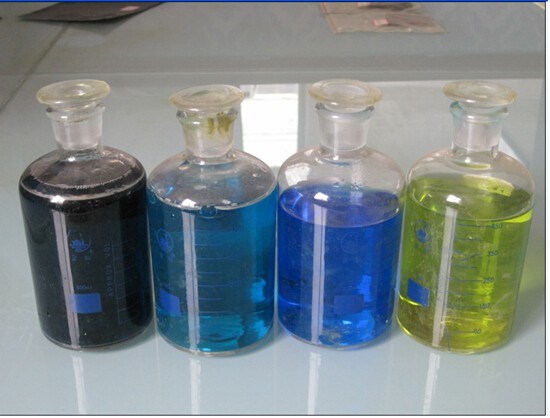Energy storage is essential for widespread use of renewable energy and electric vehicles. Lithium-ion batteries currently dominate the energy storage market. However, vanadium redox flow batteries offer advantages over lithium-ion and may emerge as an important alternative in grid-scale storage.
Vanadium Redox Flow Batteries
A vanadium redox flow battery (VRFB) stores energy in vanadium ions that exist in two oxidation states – V2+ and V5+. The ions are dissolved in an electrolyte solution that is stored in external tanks. During charging, the vanadium ions are oxidized and reduced at the two half-cell electrodes. The electrolytes are pumped from the tanks through the cell stack where electrochemical reactions occur to store or discharge energy. This separation of electrolytes from the electrochemical system provides design flexibility.
Advantages Over Lithium-Ion
The use of electrolytes in external tanks decouples power capacity from energy capacity in VRFBs. The size and power capacity of the battery stack can be designed independently based on power requirements. Additional electrolyte tanks can be added later to scale up the energy capacity without replacing existing hardware. This incremental scalability is a major advantage for large grid storage applications where power and energy needs may vary over the battery life.
Another key advantage is the non-flammability and stability of Vanadium Electrolytes. The electrolytes do not degrade or catch fire even under abuse conditions like overcharging. This intrinsic safety makes VRFBs suitable for large grid-connected installations inside buildings or densely populated areas without special venting or extensive fire suppression systems.
Lithium-ion batteries have safety issues related to electrolyte flammability that become more serious at larger scales needed for grid energy storage applications. Thermal runaway leading to fire or explosion is a risk, especially in densely packed multi-megawatt installations. There have already been incidents where thermal propagation from a few damaged cells took down entire lithium-ion battery systems meant for grid-scale storage.
Improved Cycle Life and Economics
Early VRFB prototypes suffered from capacity fading issues over hundreds of charge-discharge cycles. However, advances in membrane, electrode and electrolyte material formulations have significantly improved the cycle life stability. Demonstrated cycle life now exceeds 10,000 cycles while maintaining over 80% nominal capacity.
Many VRFB manufacturers claim cycle lives exceeding 20,000 cycles, comparable to lithium-ion. Cycle life is an important economic factor as it determines replacement and maintenance costs over the expected 15-20 year lifetime of utility-scale batteries. Improved cycle stability brings grid-scale VRFBs closer to achieving comparable levelized cost of storage as lithium-ion per kWh over the investment lifetime.
Additional cost reductions can be realized through manufacturing improvements, module standardization, optimized designs and higher production volumes as commercial deployments scale up to meet the rising demand for grid energy storage. Utilities are increasingly recognizing the technical and economic value proposition offered by the inherently safe, long-lasting and incrementally scalable VRFB technology versus alternatives for bulk grid energy management needs.
Material Availability and Sustainability
Vanadium is the 24th most abundant element in Earth’s crust and is widely distributed around the world with major reserves located in South Africa, China, Russia and several other countries. The major source for vanadium currently is as a byproduct from uranium mining and processing. It also occurs in several important ferrous and titanium alloys.
Vanadium production meets current demand without significant supply constraints. Resource and reserve estimates indicate vanadium availability well into the future even accounting for projected growth in demand from energy storage and other applications. Electrolyte vanadium ion utilization rates exceeding 98% have been demonstrated in lab tests with many manufacturers planning for greater than 95% recovery and recycling in commercial systems.
This high recoverability means that with large-scale adoption of VRFB technology, net vanadium consumption rates will be extremely low on a full lifecycle basis. In addition, recycled vanadium from end-of-life batteries can potentially be reused in new batteries. Overall, vanadium is viewed as an abundant, affordable and sustainable metal resource that can support an expanding VRFB energy storage infrastructure for decades to come.
Future Applications and Outlook
While most VRFB installations today are in the 100kW to 5MW range for utility grid services, substantial multi-MW/MWh projects are starting to emerge. An Australian energy firm plans a 30MW/120MWh VRFB plant, one of the largest so far. Asian and European utilities have announced grid-scale VRFB projects totaling several GWh in combined capacity over the next 5 years.
Even larger capacity batteries may start displacing gas “peaker” plants for prolonged renewable energy shifting. Distributed storage applications are gaining interest for community microgrids and commercial/industrial parks. VRFBs have potential for off-grid rural electrification and industrial uses like mines, desalination plants and data centers that require long-duration backup power.
Transport sector applications using vanadium flow batteries for electric vehicle charging infrastructure, buses and container ships are also being explored. If technological and economic benchmarks continue advancing, vanadium redox flow batteries could emerge as a key competitor to lithium-ion in terrestrial grid energy storage and find diverse new applications leveraging their unique benefits over the coming decades. Overall, vanadium flow batteries offer a promising long-term energy storage solution as renewable power and electrified transport continue expanding worldwide.
*Note:
1. Source: Coherent Market Insights, Public sources, Desk research
2. We have leveraged AI tools to mine information and compile it




